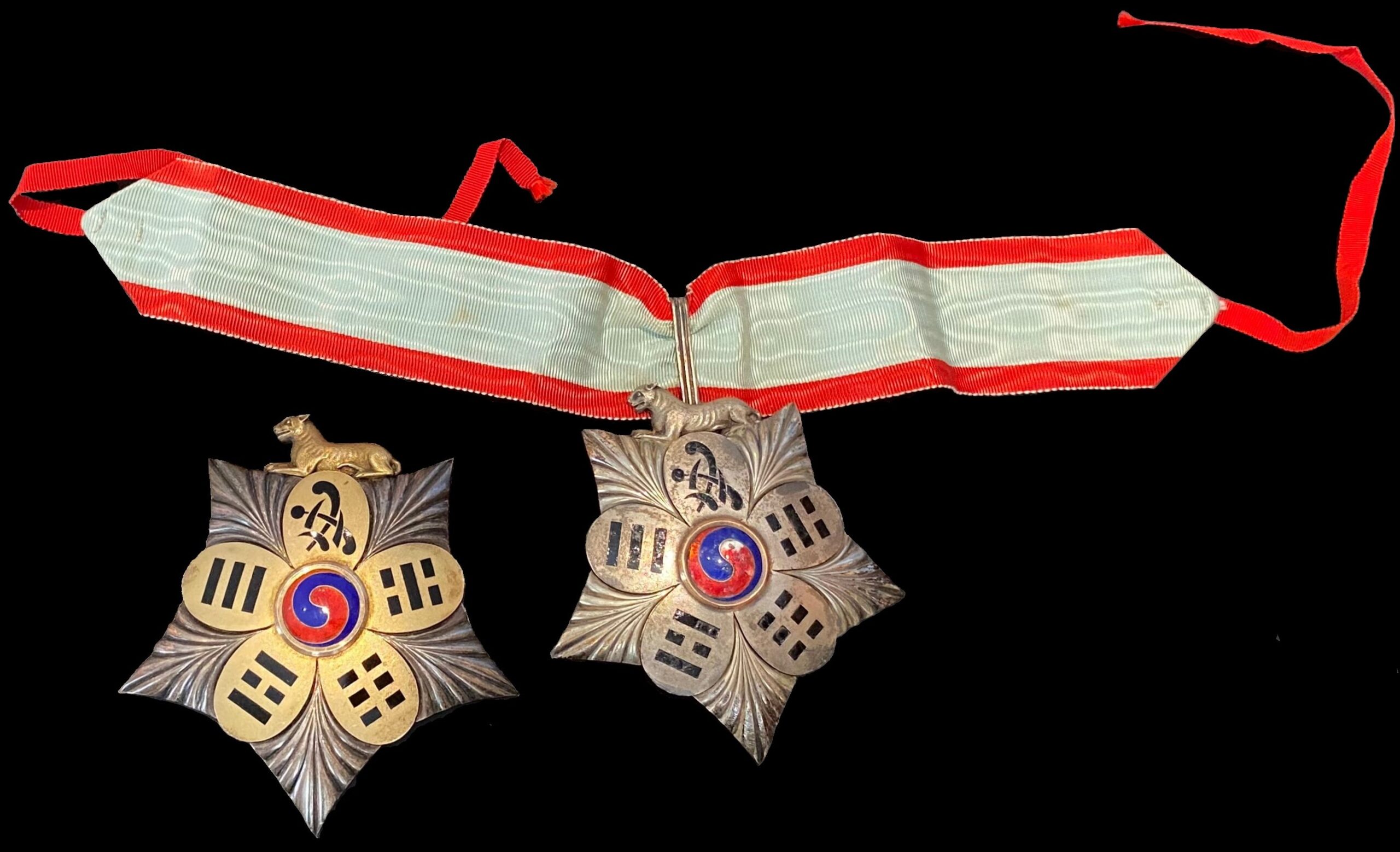
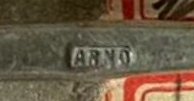
For a long time, I was not sure what this medal was. I have seen it on three occasions. On the reverse, the pin has an “ARND” (although it appears to be “ARNO”) manufacturer’s stamp. ARND “АРНД” was a jeweler in St. Petersburg, Russia (Санкт-Петербург) in the late 19th and early 20th century.
An internet search reveals that Johann-Martin Arndt came to St. Petersburg in 1793. Johann-Helvig and Johann-Samuel Arndt (born in Hanau) appeared in St. Petersburg in 1803. The family relationship between the three of them remains unclear, but the latter two were possibly brothers. Both entered the ‘Guild of Foreign Goldsmiths’, and to avoid confusion with Johann-Martin Arndt, they removed the letter “T” from their last name and turned it into Arnd. One of them had a son named Johann-Samuel Arnd (1812-1890) who entered the guild in 1845 and in the same year, the son married Sofia-Elizabeth Tegelsten (Sofia Karpovna Тегельстен). They, in turn, had two sons, Gustav and Ernst, who continued in their father’s trade and entered the guild. In 1849, Johann-Samuel Arnd started a gold and silver workshop in St. Petersburg, Russia. His manufacturer’s mark was S•A or SA, but that was changed after his death on April 2, 1890. The business gradually fell into decay because neither of the sons, Gustav nor Ernst Arnd could withstand the competition. For more specific information on ARND, see the Medals of Asia web page.
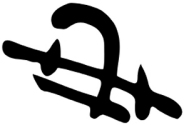
The Russian Empire established its first formal diplomatic relations with the Korean Empire in 1884. From then, until the end of the Russo-Japanese War (1904–1905), Russia exerted considerable political influence in Korea. Particularly in 1896, with King Kojong’s self-imposed exile to the Russian legation, also called the Agwan Pacheon Incident (아관파천 2/1896 to 2/1897). King Kojong and the crown prince, left Gyeongbokgung Palace 경복궁 (景福宮) and sought refuge from pro-Japanese factions, within the relative safety of the Russian legation in Seoul. The event was triggered in part by the king’s fear of a coup d’état and his reaction to the Oct. 8. 1895, Japanese assassination of his wife, the Empress Myeongseong 명성황후 (Queen Min 明成皇后).2 This short-term refuge resulted in a temporary decline of Japan’s influence in Korea and a corresponding rise in Russian influence.
The Imperial Seal of Korea 이화문 (李花紋), one of the symbols of the Korean Empire, is used for its main design feature. The Korean name Yi 이(李) translates as “Plum”. The five-petaled plum flower 이화 (李花) was an emblem of the Yi royal family and was consequently used for the empire’s coat of arms. The flower is also known as Maehwa 매화 (梅花) which signals the beginning of spring. The glyph in the top center petal is the personal signature 수결 (手決) of King Kojong. Take a moment to examine the central whorl and the 4 Trigrams found on the other 4 petals of the medal. Then compare them to the Denny Taegeukgi 데니태극기 (flag) found at the bottom of this page. My personal feelings are that this medal, with the Kojong’s personal signature along with Taegeukgi symbolism and the plum flower, places it in Korea during the period of Russian influence. The award criteria, dates of manufacture, or even how many were issued, are unknown.
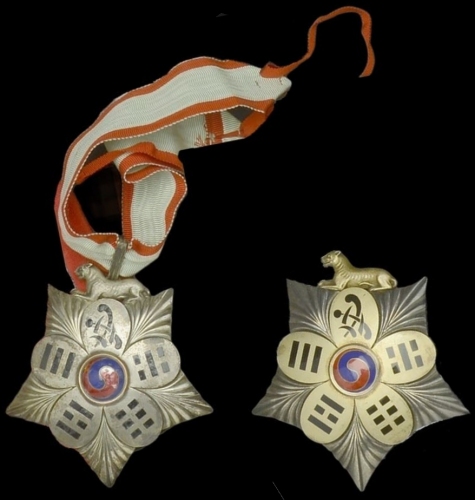
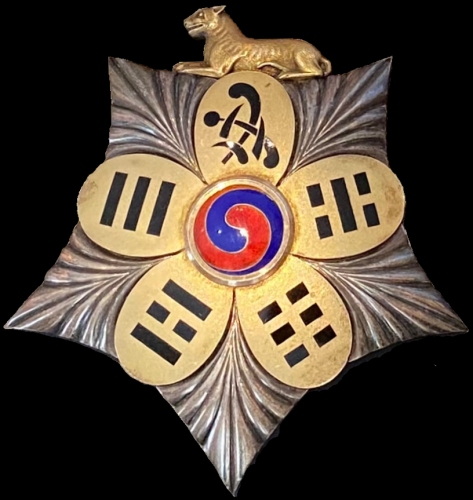
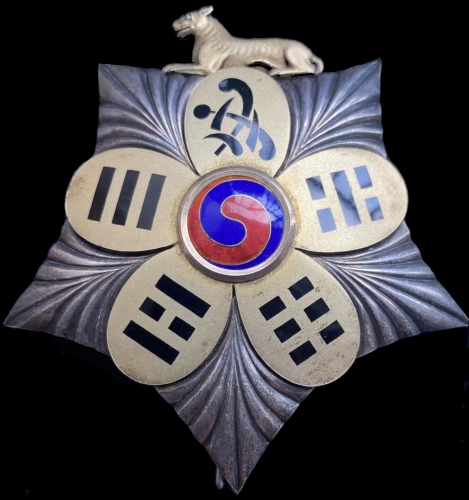
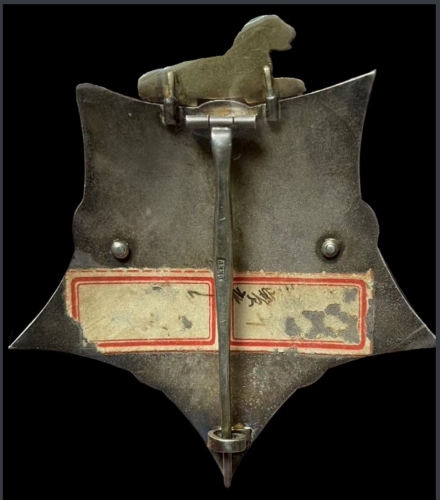
The Flag of the Korean Empire
The ‘Denny Taegeukgi’ 데니태극기 (Registered Cultural Property No. 382) is the flag that King Kojong (reigned 1863-1907) presented to Owen Nickerson Denny (1838-1900), an American diplomatic adviser. In 1981, the flag was donated to Korea by William Ralston, a descendant of O. N. Denny. The Korean Flag, the Taegukgi 태극기 had a whorl at its center from 1882-1910 and was depicted in 1889, with the whorl in the U.S. Navy book, Flags of Maritime Nations. It is the earliest surviving depiction of the Korean flag.3 Because of the Annexation, the whorl disappears in the 1914 edition of the book. The current flag of the Republic of Korea first gained popularity when it was used by the Korean Provisional Government starting in 1919. During the March 1st 1919 demonstration for independence, Korean leaders discouraged the use of the whorled flag because it represented the Korean Empire and was not a sign of modernity.

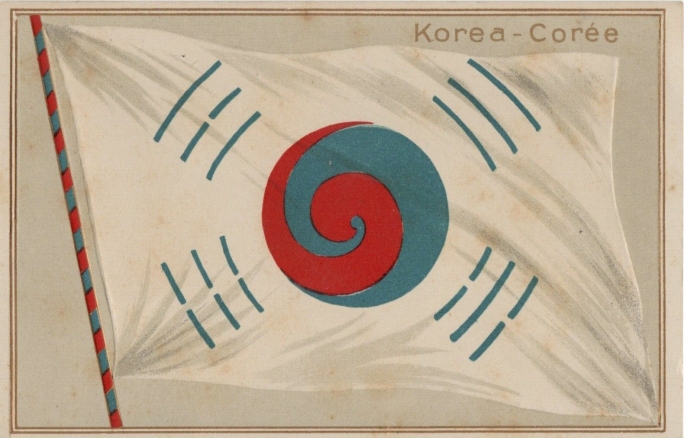
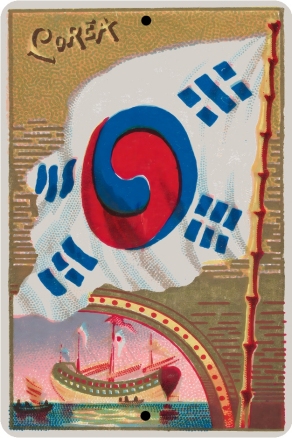

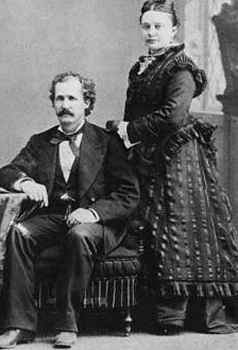
Owen Nickerson Denny (1838-1900)
Denny was an Oregon pioneer, lawyer, judge, tax collector and diplomat whose acumen and influence in the Far East in the late 19th century was substantial. He is, generally, better known in Asia than he is in the United States. Among other things, he and his wife Gertrude Jane Hall Denny (1837-1933) imported around 60 Chinese ring-necked pheasant. They arrived on March 13, 1881, at Port Townsend, Washington aboard the ship Otago. The U.S. consul general had shipped the pheasants, along with other Chinese birds and plants, from Shanghai in hopes of establishing a population in Oregon, their home state. The birds have become so common that they seem to be more of a native species than one that was first established in the U.S. in 1881.
Footnotes:
- Sugeol 수결 (手決) means ‘execution by hand’. Personal Signatures are also called Seoap 서압 (書押), Surye 수례 (手例), Suap 수압 (手押), and Hwaap 화압 (花押), and the king’s is called Eoap 어압 (御押).
- The attack and assassination are known in Korea as the Eulmi Incident 을미사변 (乙未事變).
- United States Navy Department, Bureau of Navigation. Published by the Navy Department, Washington, D. C., July 1889.
